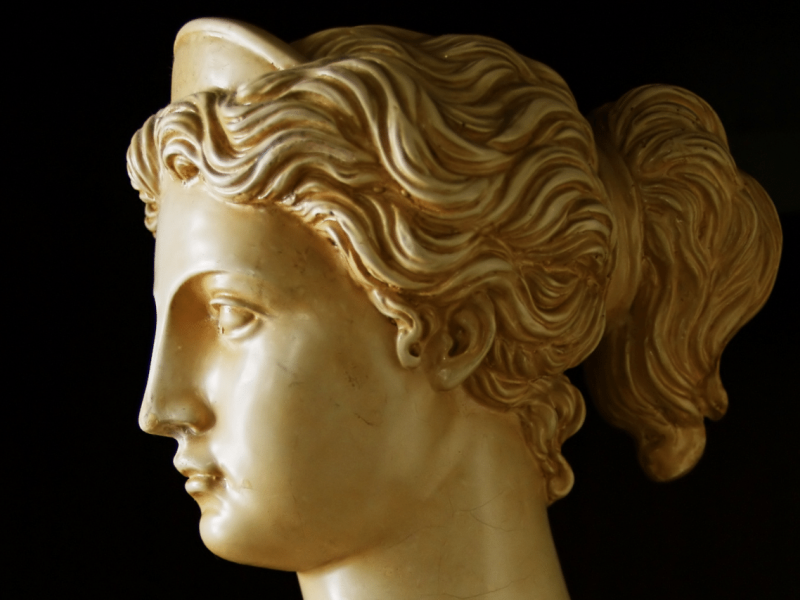Mistress of Animals (Potnia theron)
Potnia theron or "Mistress of Animals" is the figure found more commonly in Minoan and Mycnenaean art than any other Potnia. She was also known as "Lady of Wild Things", "Mistress of Wild Beasts", and several other similar titles.
It should be noted that this name, Potnia theron, has never been found on the Linear B tablets. The name is actually a modern invention to denote Bronze Age Aegean goddesses that frequently appeared with animals in icons. So it would be a mistake for anyone to say that any goddess had this name.
Potnia theron was a goddess of nature, particularly over the wild and domesticated animals. She controlled nature and animals, either by her presence or by subduing by force.
Influences of the Near East
The Mistress of Animals was not confined to Minoan Crete or mainland Greece. Similar figures can be found in art in the Near East, such as from ancient Syria and in Babylonia. The Bronze Age Near Eastern religions, as well as their iconoclastic artwork, probably influenced the Minoan civilisation since Crete had prosperous trade links with the East.
In Near Eastern art, the Mistress of Animals is often seen naked, flanked on both sides by animals. Sometimes she forcibly holds them in both hands by their ears, throats, or by their hind legs. At other times, she is seen standing on the back of an animal. This showed that the goddess had power over nature and the power to subdue wild animals.
These influences can be seen on the Francois vase of the 4th century BC, where it depicted the goddess Artemis holding a lion and stag by their throats. However, Artemis appeared dressed in a long gown, unlike her Near Eastern counterpart. See the Olympians, Artemis, for the image of her as the Mistress of Animals.
Artemis was the usual goddess whom people associate with the Mistress of Animals. Artemis was the goddess of hunting and the chase. She was also seen as the woodland goddess and the protectress of wild animals.
Potnia theron may well be the Cretan huntress goddess Britomartis or Dictynna. Britomartis was clearly identified with the later virgin goddess Artemis. Artemis inherited some of the attributes of the Mistress of Animals.
Differences Between the Mistress of Animals and Artemis
Artemis is the closest Greek goddess to the Minoan Mistress of Animals (Potnia theron), because of Artemis' involvement with wild animals. However, there are several notable differences between the two goddesses.
We usually see Artemis as a virgin and a huntress. In art, she is usually seen holding a bow in her hand.
The Mistress of Animals, on the other hand, doesn't appear with a bow. She was a goddess who controlled the natural world, such as wild animals or birds, not as a huntress of wild animals. Her power was expressed through holding the animals by their ears, throats or hind legs. Also, the motif of the Potnia theron is usually seen with wings; the Near Eastern icons of the Mistress of Animals don't have a pair of wings.
As the Greek huntress Artemis, the goddess was normally seen with other women or nymphs, but the Mistress of Animals was more often seen with a male figure, usually a mortal ruler or warrior (as in the case with the Near Eastern goddess). This was because the Mistress of Animals was usually seen as the patron of young warriors. The Greek Artemis was sometimes worshipped by warriors, such as in Sparta, where she was patron of the initiation of boys into young warriors.
Related Information
Name
Potnia theron – "". Potnia – "Mistress" or "Lady".
Artemis, Diana.
Related Articles
See also Potnia.
Artemis, Britomartis (Dictynna).
By Jimmy Joe






